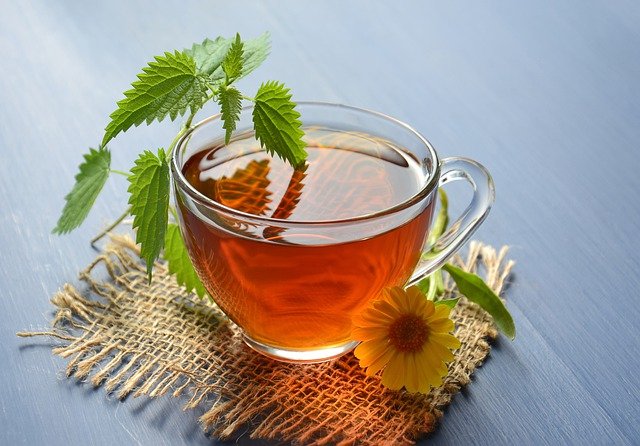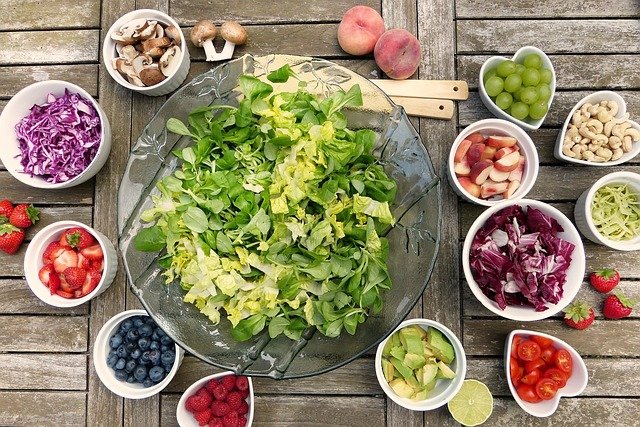If you’re an avid user of skincare products or if you regularly do grocery shopping, chances are that you’ve heard the buzzword “antioxidant” as a selling point for various health-centered products.
Antioxidants are indeed a necessity for our bodies and the hype around them is justified. However, there exists two types of antioxidants in the market: natural and synthetic. Synthetic antioxidants are those commonly found in processed food to prevent deterioration, which prolongs the shelf life of these foods.[1] Therefore, these synthetic antioxidants, by association with processed food, aren’t healthy. Sometimes, manufacturers will claim that their product is packed with antioxidants and are thus healthy – even though it’s high in saturated fats, sugars, and sodium!
Your body also produces its own antioxidants which are called endogenous antioxidants. But due to the rise of toxic pollutants in our environment, these natural defenses may not be enough to protect you from harm.[2]
After endogenous antioxidants, natural antioxidants are the next best supply of free radical fighters. These are the antioxidants that can be obtained from nature – fruits, vegetables, nuts, berries, and the like are abundant in antioxidant compounds.
And the best thing about them is that they’re packed with other nutrients aside from antioxidants, which will provide you with well-rounded nourishment.
But first, let’s learn how exactly antioxidants benefit our health.
The Benefits of Antioxidants
The main role of antioxidants – and what it’s known best for – is to protect your cells from harmful free radicals.
Free radicals are the unstable molecules that are a result of oxidation, the process wherein oxygen is metabolized. This oxidation process if further accelerated by stress, cigarette smoking, alcohol, sunlight, pollution, and other environmental factors.
These free radicals steal electrons from other molecules in your body, damaging your cells and their DNA. The body can only tolerate free radicals up to a certain point – over time, an excess of free radicals can lead to irreversible damage and diseases, including cancer.
By supplementing yourself with antioxidants, you’re providing your body with the defense it needs to protect itself against life-threatening diseases. In one study, it was found that diets that are composed of antioxidant rich fruits and vegetables are linked to longevity and a lower risk of cancer, heart disease, and strokes.[3]
Due to its protective effects on your cells, antioxidants also have anti-aging effects. For those who seek to preserve their youth, antioxidants are your best friend. A review article from 2010 showed that antioxidants such as ascorbic acid, tocopherols, and polyphenols are able to protect the skin from UV-induced skin aging.[4]
10 Organic Foods That Are Great Sources of Antioxidants
Some processed foods may market themselves with synthetic antioxidant additives, but nothing beats the real and organic sources.
For your long-term health, here are some foods rich in antioxidants that you can easily incorporate in your diet.
- Blueberries
A common ingredient in desserts and yogurt bowls, blueberries are in fact a superfood loaded with antioxidants. In fact, blueberries contain the most antioxidants among fruits and vegetables at 9.2mmol per 100grams.[5]
The main antioxidant compounds that can be found in blueberries are called flavonoids. Out of all these flavonoids, anthocyanins are believed to contribute the most to the blueberries’ benefits. The anthocyanins in blueberries are linked throughout various epidemiological studies to a reduced risk of cardiovascular diseases, death, type-2 diabetes, as well as improved weight maintenance and neuroprotection.[6]
Another notable healthful aspect of blueberries is the capability to reduce inflammation, which helps protect the cardiovascular system and glucoregulatory functions. This protects you from developing chronic inflammation and the health problems that arise from it.[6]
While they’re most commonly enjoyed as a dessert topping, the best way to consume blueberries is by eating them raw. They’re also delicious this way, as the berries themselves are already flavorful. Combined with other berries and nuts, you can eat them as a snack instead of unhealthy junk food.
- Dark Chocolate
Chocolate lovers, rejoice! If you can’t let go of your favorite milk chocolate bars, it’s time to switch to the healthier variant – dark chocolate. They might taste slightly bitter, but this is only because they contain higher amounts of cocoa, where the majority of chocolate’s nutritional value comes from.
Cocoa contains even more flavanols than fruits and vegetables, and dark chocolate has an average of 15mmol of antioxidants per 100grams.[7]
The flavanols in dark chocolate have been found to promote blood flow and therefore stabilizing blood pressure. The flavanols are able to stimulate the endothelium (arterial lining) to produce nitric oxide, which relaxes the arteries, lowering the resistance of blood flow.[8]
For those who are conscious about their skin, dark chocolate was also found to be able to protect against harmful UV rays thanks to its antioxidants.[9]
- Strawberries
Strawberries are another popular berry that is known to be a rich source of vitamin C and other antioxidants. A 100 grams serving of strawberries have an average of 5.4mmol antioxidants, one of the highest among fruits and vegetables.[7]
Among those antioxidants are anthocyanins, which give strawberries its famous red color. Anthocyanins are noted for its capability to lower LDL (the “bad” cholesterol) levels in your bloodstream, while boosting HDL (the “good” cholesterol).[10]
- Kale
Kale is a dark leafy green food that has seen a surge of popularity among health enthusiasts in recent years. It’s rich in vitamins C, K, and A, and has approximately 2.7mmol antioxidants per 100 grams.[7]
Out of all these antioxidants, quercetin and kaempferol take up most of kale’s nutritional value. Like other antioxidants, they have anti-inflammatory, anti-cancer, anti-viral, and neuroprotective effects on your body.[11]
Kale can also be enjoyed in many ways. It can be steamed, stir fried, roasted, or consumed raw. Some people also consume them as a snack or as an ingredient for their green smoothie, something that has become popular on Instagram lately. You can also add kale to salads, pasta, and even pizza!
- Red Cabbage
A common salad ingredient, red cabbage is the more nutritious sibling of the more popular green cabbage.
Red cabbage has been regarded as a superfood by health enthusiasts, as it is low in calories but is highly dense in nutrients. It’s a rich source of antioxidants at 2.2 mmol per 100 gram serving.
Anthocyanin is the antioxidant that gives red cabbage most of its antioxidant properties and its signature deep purple color. This is the same compound that can be found in other red fruits and vegetables such as strawberries and raspberries.[13]
Anthocyanins possess anti-cancer, anti-obesity, anti-microbial, anti-viral, and anti-inflammatory properties, which give them a strong medicinal value. These antioxidants also have strong neuroprotective abilities. In one in vitro study, it was found that anthocyanins were able to protect human neuronal cells from oxidative stress.[12]
Aside from using them in salads, red cabbage can also be enjoyed in stews, stir fry, or as preserves.
- Beans
Beans, and legumes in general, are known to be great sources of antioxidants. In fact, beans have been called the “cornerstone of longevity” thanks to its nutrients and affordability. A 100 grams serving of beans is estimated to have up to 2 mmol antioxidants.
The antioxidant content of the bean depends on its color – thus, colored beans (red, black, or brown) have higher nutritional value than white beans. For instance, kidney beans contain anthocyanin, which gives it its red color.[13]
The role of bean-centric diets in cancer prevention has been the subject of many studies. Researchers believe that beans have anti-cancer capabilities due to their flavonoids, tannins, phenolic compounds, and other antioxidants. These compounds can also prevent other chronic diseases, such as type-2 diabetes or obesity.[13]
The best thing about beans is that they’re relatively cheap for such a nutritious food. They’re also loaded with protein and dietary fiber, which will help you feel full even with smaller servings.
- Spinach
Popeye was right when he chose spinach as his superfood. Although it won’t give you instant superhuman strength, spinach is another leafy green that is loaded with vitamins, minerals, and antioxidants that will keep chronic diseases at bay.
Spinach is also rich in zeaxanthin and lutein, two antioxidants that give the leaves its beautiful dark green color. These two antioxidants are also known to be essential for eye health. Several studies have shown that zeaxanthin and lutein can help prevent macular degeneration and cataracts, both of which lead to blindness.
- Beetroot
Beets are a delicious and highly nutritious root crop that is used in many cuisines around the world. It is rich in antioxidants, especially betalains – the compounds which give it its dark reddish color.
These betalains have been linked to a lower risk of cancers in the digestive system. Betalains have also shown anti-inflammatory and antitoxin properties.[15] However, it should be noted that the beetroot’s betalains are concentrated on its flesh and that it loses its nutritional value with heat – so to get the most betalain out of beetroot, it should only be steamed for at most 15 minutes.[16]
Additionally, beetroot is also a great source of potassium, magnesium, fiber, phosphorus, iron, beta-carotene, folic acid, and the vitamins A, B, and C. There’s so much nutrition packed in a such a small vegetable!
- Sweet Potatoes
If you’re a huge fan of potatoes, you’re also going to like its nutritious and arguably, tastier cousin – the sweet potato.
Sweet potatoes are a root crop that come in many vibrant colors – orange, purple, brown, and yellow. This is an indicator of their varied and rich antioxidant composition, which is mostly beta-carotene. Just like in carrots, this beta-carotene is turned into vitamin A once it enters our system, a vitamin that is important for maintaining optimum eye health.[17]
Sweet potatoes are also rich in fiber and is a great carbohydrate that will keep you energized for lesser calories. This makes sweet potato a perfect food for people who want to cut down on calories.
- Green Tea
Did you know that Green Tea is the second most consumed beverage after water?
This well-loved drink won’t just give you a buzz, but it’s widely known to be a potent source of antioxidants as well. The antioxidants in green tea are called polyphenols, which are known for its anti-cancer capabilities. For instance, one epidemiological study found that women who were at risk of breast cancer due to genetic predisposition were less likely to have breast cancer when they regularly consumed green tea.[18]
Green tea is also known for its anti-inflammatory properties. It can help prevent chronic diseases such as type-2 diabetes, obesity, and cardiovascular diseases.
Regular consumption of green tea can also help preserve your memory and brain function, as it has been linked to a lower risk of developing Alzheimer’s.[19]

Conclusion
The foods included in this list are just some of the natural sources of antioxidants – there’s a whole lot more of them that exist, especially from plant-based sources. It goes to show that a diet based on organic food, and less of the processed foods, ensures that you’ll avoid most chronic diseases that affect most adults today.
Coupled with regular exercise and a healthy lifestyle, your body will thank you for supplying it with the antioxidants it needs to replenish itself from the harmful effects of free radicals. This will not only help you live longer, but you’ll also age less and have better energy levels.

